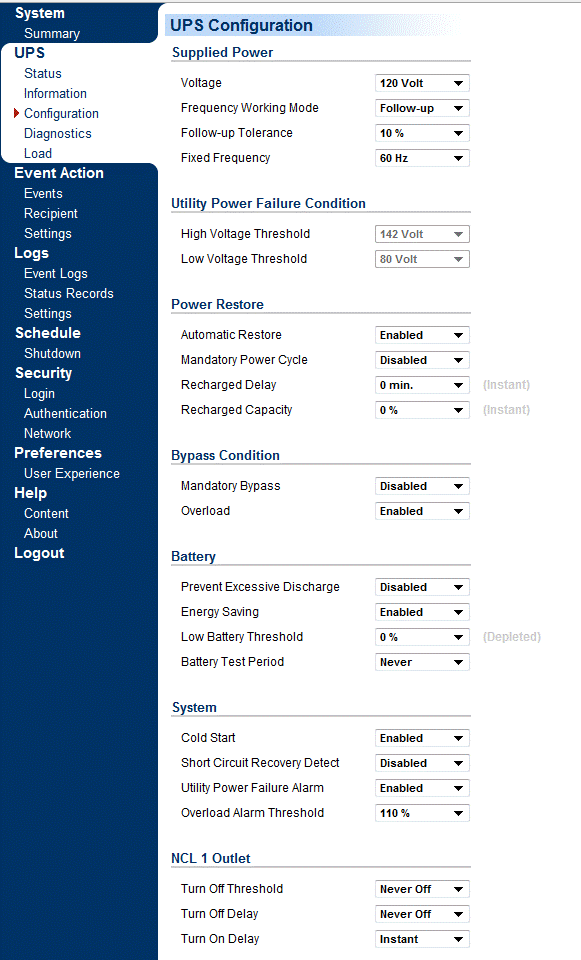

if one selects the option to follow source:

otherwise it will discharge just like cheap line interactive UPSes:
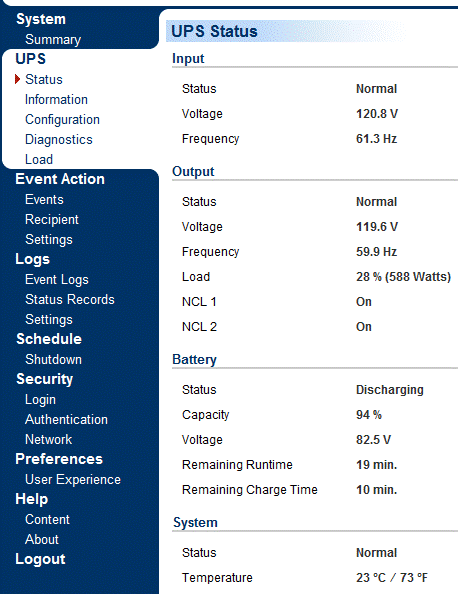
The advantage of a single UPS is one can pull all the loads from
the breakers to send them to the UPS. In my case the TV, Lighting
Controlers and Computers for a inrush peek of 1kw:
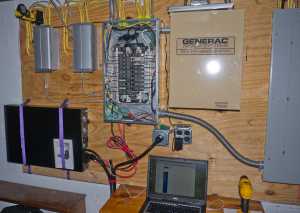
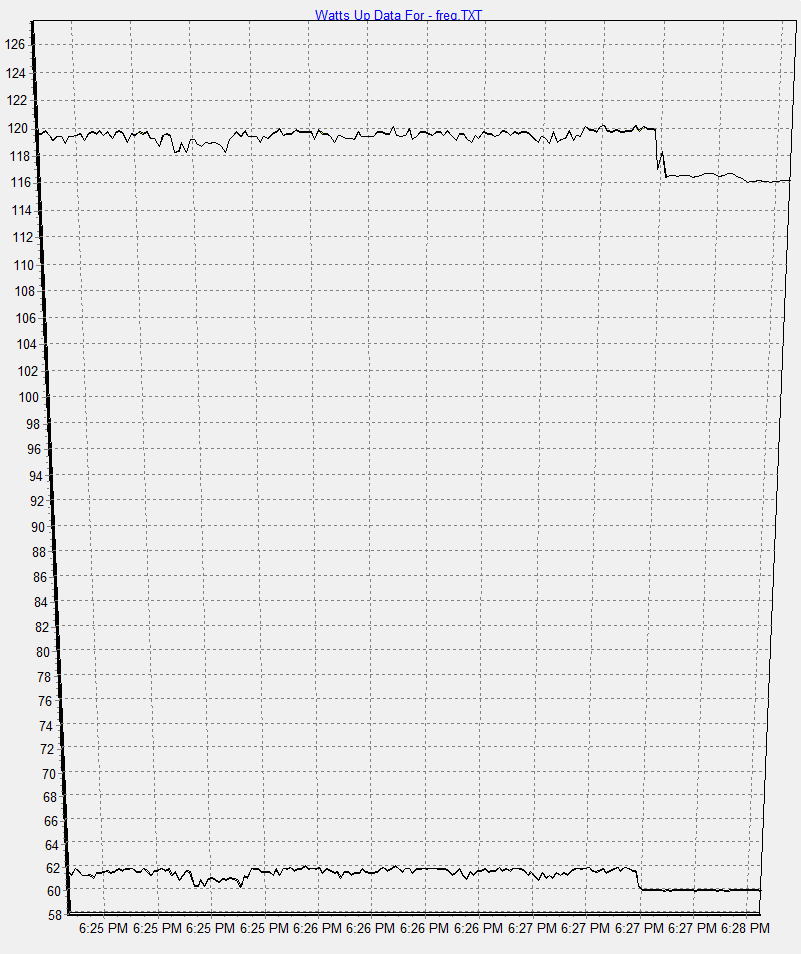
Our three computers (Ann's Q6600, My mac-pro and our 12 disk nas)
don't use anywere near the ratings of their power supplys.
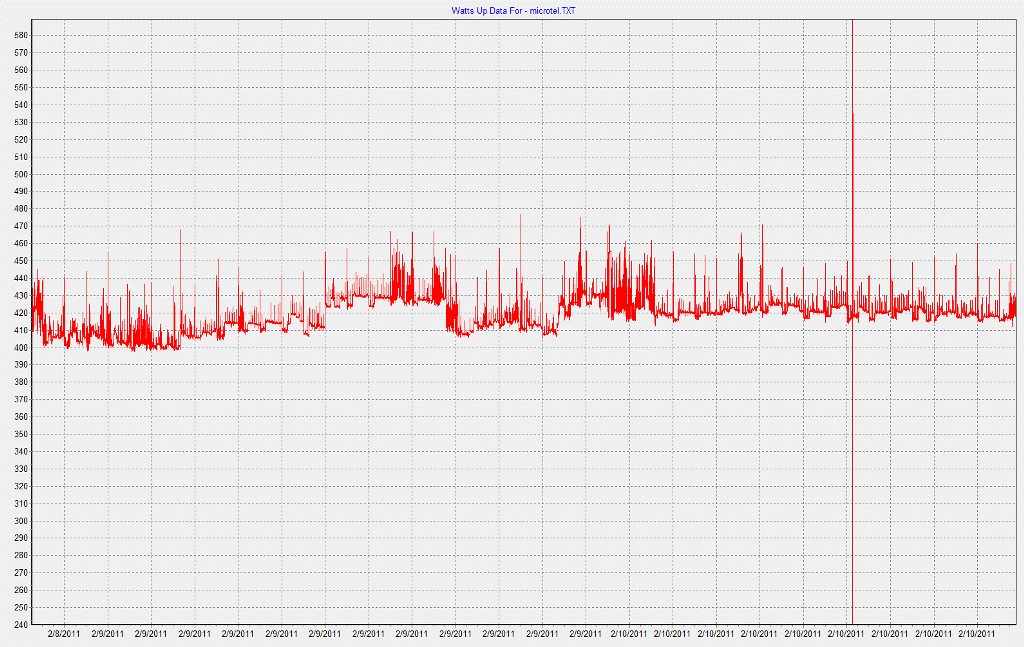
But there is a good spike to spin up 12 disks power cycling the nas
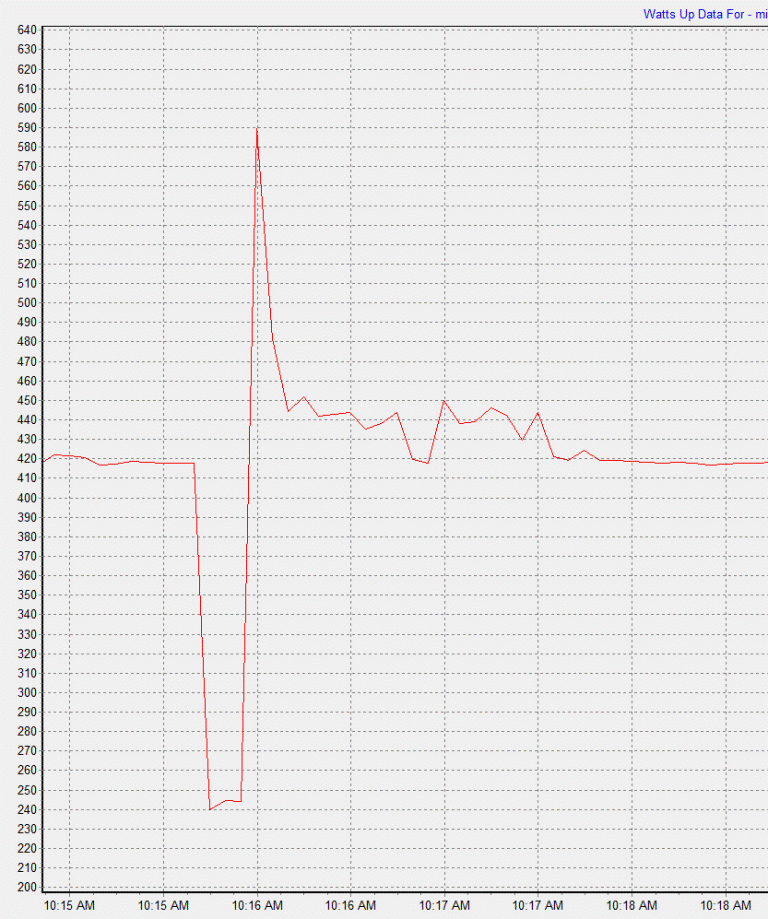
So a very small UPS is all I need for the 30sec it takes to switch to generator power. But all UPS list a VA (Volt-Amp) rateing. This sounds like watts but isn't because its taken at DC current rather than resistive load. If the amps don't peek at the same time as the volts, you don't have the power (watts). Its like the beer you get at OU that's all foam, yea, the glass is full, but the amount of liquid that can get you drunk is missing. Skip the VA raiting and look just at wattage.
The other issue is most consumer UPS use a modifyed or PWM sine wave: Riped off from here
Any device that uses a control circuitry that senses the phase (for voltage / speed control) or instantaneous zero voltage crossing (for timing control) will not work properly from a voltage that has a modified sine wave-form. Also, as the modified sine wave is a form of square wave, it is comprised of multiple sine waves of odd harmonics (multiples) of the fundamental frequency of the modified sine wave. For example, a 60 Hz. modified sine wave will consist of sine waves with odd harmonic frequencies of 3rd (180 Hz), 5th (300 Hz.), 7th (420 Hz.) and so on. The high frequency harmonic content in a modified sine wave produces enhanced radio interference, higher heating effect in motors / microwaves and produces overloading due to lowering of the impedance of low frequency filter capacitors / power factor improvement capacitors.
Some examples of devices that may not work properly with modified sine wave and may also get damaged are given below
The problem is its hard to simulate a sine wave from a spinning mass digitaly. It takes power and
money. But there is a recent vendor that claims to have something close
but at a low cost.

What I think they are doing is a liner trinagle.

They claim that PFC power supplies require this sine wave like that
italic text above, but I'm not so sure. There is an AT std for a 20ms
voltage dropout, that's well over the 4.16ms zero crossing. There might
be an inrush current that surpasses the output of what would normaly be
a fine sized USP, but if its the same price, what the heck. They are are
very effecent:


So went to MicroCenter and got a CP1500PFCLCD. Despite its claimed input 90-140 Volt @ 57Hz - 63Hz it clicked on and off while on generator. So I guess my only option is noise and power hungry Double Conversion UPS that can deal with my generator. sigh..